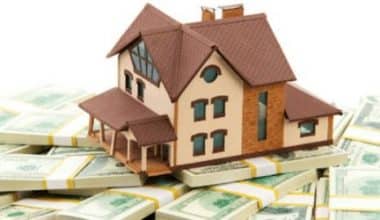The word “pre” means an act done in advance that is ahead of something. So, pre-foreclosure is the process that takes place before legal actions are carried out by a lender. So, understanding pre-foreclosure can help you as a borrower, an investor, and possibly a lender. Knowing how pre-foreclosure homes are sold, what pre-foreclosure lists are, and how long the pre-foreclosure process will take is very essential.
But first, let’s talk a little about foreclosure.
What is foreclosure?
Foreclosure can be defined as the action of taking possession of a mortgaged property when the debtor fails to keep up the payments. The mortgaged property is sold to replace the money owed by the borrower. During foreclosure, short sales are mostly encountered.
What is Pre-foreclosure?
Pre-foreclosure is the first step in the foreclosure process to legally recover the money owed by the borrower by taking a property into possession. Pre-foreclosure can also be the period given to a borrower for redemption. In pre-foreclosure, the lender is willing to negotiate with the borrower.
How Does Pre-foreclosure Work?
When a person borrows money or takes a loan to purchase a property, they sign a contract with the lender to repay the loans in monthly or yearly installments, as the case may be. Monthly payments are usually structured to cover a portion of the principal and interest payments on the mortgage. There are usually rules in the contract that state that if the borrower misses a payment for three consecutive months, The court gives the lender authority to begin pre-foreclosure.
At first, the court sends a notice of default to remind the borrower that in 30 days’ time foreclosure proceedings might begin if the debt is not whole fully covered. This action may take weeks to months as it varies according to state. At this stage, the lender is willing to negotiate with the borrower to avoid unnecessary expenses that come with filing for foreclosure. If foreclosure is eventually granted, an eviction notice is sent then the lender takes into possession of the mortgaged property.
How to Avoid Pre-foreclosure
Though the pre-foreclosure is not as devasting as the foreclosure, it is necessary to avoid them. Making your monthly payment on time is the best solution to avoid the challenges that come with preforeclosure proceedings. In cases whereby there are valid reasons, the suitability should be discussed with your lender to reach a suitable condition.
Benefit of Pre-foreclosure
Pre-foreclosure can be a win-win situation for everyone if the borrower and the lender can agree. A pre-foreclosure is a redemption period for the borrower. You may lose a few, but not all. Selling your home during pre-foreclosure might not leave you penniless.
Pre-foreclosure Homes
A pre-foreclosure home may sometimes be difficult to find as they might not be available through regular sources. Investing in pre-foreclosure homes can be a great source of income if you have the cash as their prices are mostly negotiable.
What Is a Pre-foreclosure Home?
A pre-foreclosure home is a property at risk of going into foreclosure. A home goes into pre-foreclosure when a lender files a notice of default. Homes in preforeclosure can have enough value to cover the outstanding mortgage. The homeowner is left with two options: to either sell the property or pay the debt. Since the homeowner won’t want to risk going into foreclosure, as it hurts their credit history, they are obliged to put the property on a short sale. A home in pre-foreclosure and foreclosure are different.
What Is a Short Sale?
A short sale is a sale in which a homeowner in default sells a home to prevent foreclosure. Short sales of homes include negotiating with the mortgage company to sell the property for less than what is owed. The borrower can then walk away from the closing table without owning anything further. When selling the property, the lender will not get all his money back and will have to forfeit the remaining money. But the borrower may also leave empty-handed in each transaction but with a good credit history.
The Benefit of Buying a Pre-foreclosure Home
The homeowner is a motivated seller and is under a time constraint, so they might be willing to cut down on the price.
Can You Buy a Pre-foreclosure Home With a Loan?
Yes, you can get a loan for a pre-foreclosure, but there might be competition as investors would like to invest in pre-foreclosure homes as they are cheaper. You will have to get pre-approved for a loan before you start searching for a pre-foreclosure home.
See Also: Our guide to buying a foreclosed house
How to Negotiate a Pre-foreclosure
You can negotiate a preforeclosure only if you find one. These are the following steps to follow:
Look for pre-foreclosure listings. There are several places to find preforeclosure lists. You can start by checking public records as most properties about to go into foreclosure are recorded for public notice. You can visit real estate websites to search for properties that are about to be foreclosed.
Look for a foreclosed property in a good location, as most properties are likely to be found in a comprised state. You can hire a real estate who is experienced in that area.
Arrange a meeting with the seller and conclude a price.
In many cases, it is easier to purchase foreclosures in cash. The homeowners are under a time constraint and will want to sell to a cash buyer. Sellers are more motivated to sell to a cash buyer, and it can make the closing process move much faster. However, many buyers of foreclosed homes do so with a mortgage. Mortgages can be obtained for foreclosed homes the same way you get them for regular home purchases. Be sure to include the cost of repairs, renovations, and closing costs when calculating the amount to borrow
Pre-foreclosure Lists
A pre-foreclosure as the name implies is a list that contains many homes that are at risk of foreclosure.
What Are Pre-foreclosure Lists For?
Pre-foreclosure listings can track down properties that are about to go into foreclosure. With pre-foreclosure listings, real estate investors can find it easier to purchase houses at cheaper rates.
Where to Find a Pre-foreclosure List
There are various places to find good pre-foreclosure listings such as:
#1. Websites
There are several websites online which contain names and details of pre-foreclosure lists. You can surf the internet and search for pre-foreclosure lists and they are mostly free.
#2. Public Record
This is one of the free methods of searching for properties in pre-foreclosure. Lenders post a public notice when a house is going into pre-foreclosure. Pre-foreclosure listings can be found for free in the public records at the county recorder’s office. It usually includes the property address and the homeowner’s name. They also include the name of the bank responsible for the foreclosure. The information usually found in public records is not enough, and using public records can be time-consuming.
#3. Real Estate Agent
If you have contact with a real estate agent who specializes in foreclosed properties, then it will be easier as you can ask them. They will have enough information and might be able to reach out to the homeowner, but it will cost a few coins.
#4. Lenders
Because it’s to their benefit, many lenders will provide you with a pre-foreclosure list if you simply ask.
#5. Newspapers
You can pick up your newspaper and check for pre-foreclosure lists. Local newspapers publish addresses of homes about to be in foreclosure. In your local newspaper, read the notice of sale advertisements, and be sure to get your copy right after they publish it so you can be the first to jump on a promising opportunity.
See Also: Our article on foreclosure Listings
How Long Is the Pre-foreclosure Process?
How long the preforeclosure process takes may vary under unusual circumstances. Typically, when a debtor misses months of payments, the lender sends a notice of default to the borrower 30 days after a missed payment.
How long is the preforeclosure process? The state law requires that the lender wait 90 days in addition to the first notice before sending a report that states that the borrower has not met up with the payment.
The court then allows the lender to file a foreclosure complaint. Filling out the foreclosure complaint officially begins the foreclosure proceeding. The borrower will have a set amount of time to respond to the complaint and explain why a foreclosure is not appropriate. If the borrower fails to respond to the complaint, the court can enter a default judgment against the borrower, which would allow the lender to finalize the foreclosure on the property and begin the foreclosure auction process or sale process.
So technically the preforeclosure last 120 days but may vary according to state or court.
How long does a house stay in pre-foreclosure? Technically, the house stays in the pre-foreclosure process until the lender files official foreclosure documents with the court. This means that you can still save your home from the pre-foreclosure process up until the point that the lender begins the official foreclosure proceedings in court. How long can a house stay in pre-foreclosure? Typically, the pre-foreclosure process will last around 120 days, but this period can be longer if the lender files the foreclosure complaint after the required 120-day waiting period.
READ ALSO ANCILLARY ESTATE
How to Get Out of Pre-foreclosure
If you ever face a preforeclosure problem, there are various ways to get out of a preforeclosure and we will be treating some of them here. Once the pre-foreclosure proceedings begin, there are various ways to opt out. In this case, the lender is ready to negotiate with the borrower to avoid the cost that comes with foreclosure proceedings:
#1. Loan modification
A loan modification is one way to avoid foreclosure. When a borrower is unable to meet up with the monthly payment, they can arrange a meeting with the lender and reach an agreement. You can explain to your lenders the reasons behind your late payment and, if the lender is understanding, you can extend the length of the loan. In other cases, the lender might likely decrease the interest rate to a lower one. The lender may agree to avoid the hassles that come with the foreclosure process.
#2. Short Sale
When the borrower is obliged to sell its property for a lower amount to cover the debt, this is referred to as a “short sale.” By selling the property and paying the debt, both the borrower and the lender can escape the foreclosure process. Sellers in short sales are not always people who are underwater on their mortgage.
Sometimes, sellers engage in short sales because the market is not great and they have a property or properties that they need to dispose of. Regardless of whether the property in a short sale is in foreclosure, pre-foreclosure, or neither, working with an attorney in the short sale process can help you ensure that your agreements with the lender will satisfy the loan and help you truly escape the foreclosure process.
#3. Pay the Balance
You can easily avoid preforeclosure if you pay the outstanding balance. The lender should withdraw with immediate effect if you pay the outstanding balance.
#4. Refinancing
Another way of avoiding preforeclosure is by getting approved for another loan. You can acquire it through your current lender or through another mortgage lender. This allows you to renegotiate new terms and gives you a long time to pay off the loan.
Conclusion
Pre-foreclosure is the first step to foreclosure. It usually leads to foreclosure if the borrower doesn’t act fast.
Pre-foreclosure homes are properties about to go into foreclosure. Homes in preforeclosure can have enough value to cover the outstanding mortgage. They are usually for a short sale. A home in pre-foreclosure and foreclosure are different.
Pre-foreclosure lists can be found on websites, public records, newspapers, and so on and can last up to 120 days depending on location, as it varies in the state.
FAQs
How do I sell my House during a pre-foreclosure?
You can contact a real estate agent to put your house on the market, or you can visit a real estate website.
What does it mean when a house is a pre foreclosure?
It means your house is at risk of going into foreclosure, and if that happens there might be damage to your credit history
Where can i find pre-foreclosure home?
You can find pre-foreclosure homes in public records, websites, and local newspapers.
- HOUSE FORECLOSURE Explained!!! (+ Detailed guide to buying Foreclosed homes
- FORECLOSURE LISTINGS: How to find Free Foreclosure listings stress-free
- What Is a Short Sale? Guide To The Short Sale Process
- SHORT SALE: Definition, Process & Benefits
- WHAT IS REDLINING: What You Need to Know
- HOW TO BUY A FORECLOSED HOUSE: Steps to Buying a Foreclosed House
- RIDER INSURANCE: Meaning, Types & Factors






